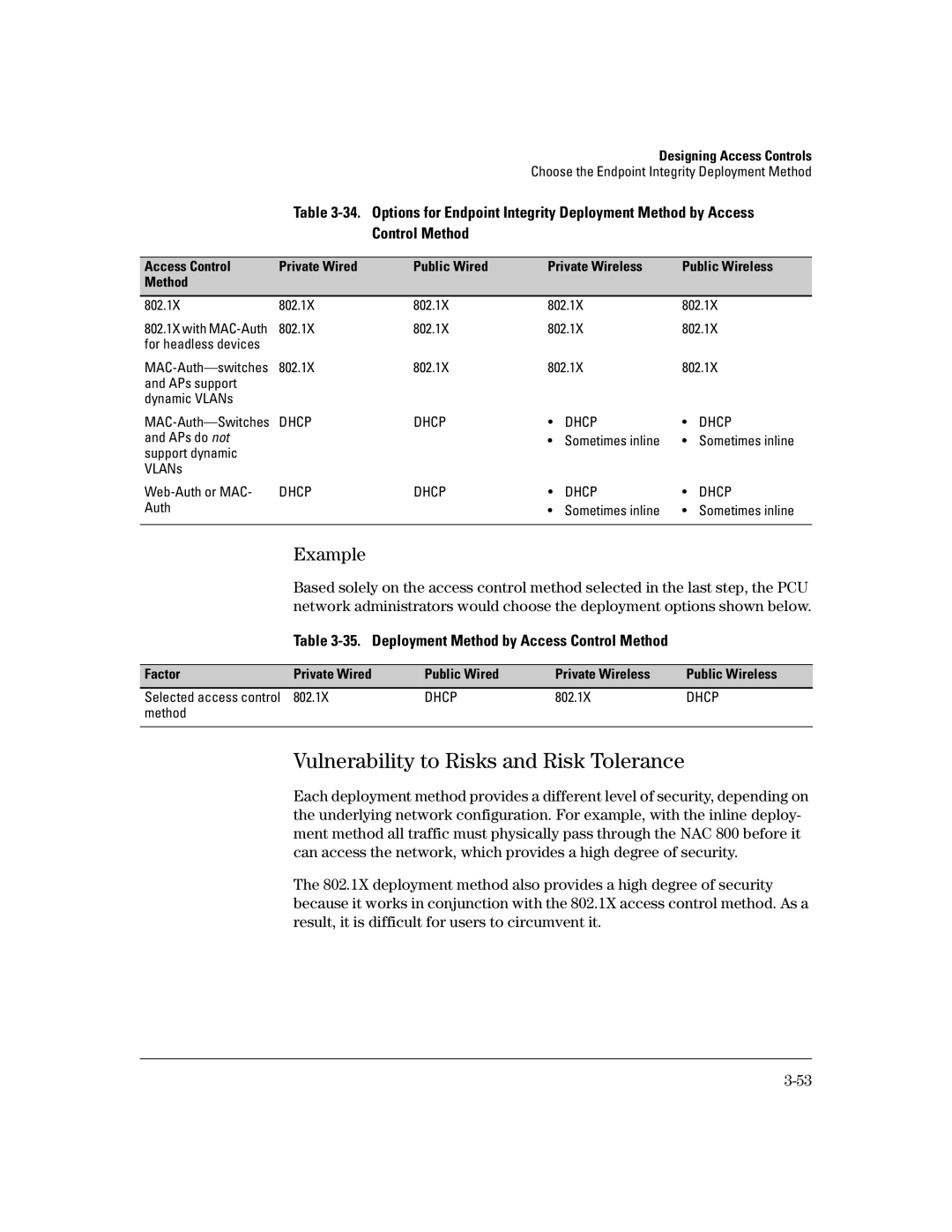
Designing Access Controls
Choose the Endpoint Integrity Deployment Method
Table
Control Method
Access Control | Private Wired | Public Wired | Private Wireless | Public Wireless | ||
Method |
|
|
|
|
|
|
|
|
|
|
| ||
802.1X | 802.1X | 802.1X | 802.1X | 802.1X | ||
802.1X with | 802.1X | 802.1X | 802.1X | 802.1X | ||
for headless devices |
|
|
|
|
|
|
802.1X | 802.1X | 802.1X | 802.1X | |||
and APs support |
|
|
|
|
|
|
dynamic VLANs |
|
|
|
|
|
|
DHCP | DHCP | • | DHCP | • | DHCP | |
and APs do not |
|
| • | Sometimes inline | • | Sometimes inline |
support dynamic |
|
|
|
|
|
|
VLANs |
|
|
|
|
|
|
DHCP | DHCP | • | DHCP | • | DHCP | |
Auth |
|
| • | Sometimes inline | • | Sometimes inline |
|
|
|
|
|
|
|
Example
Based solely on the access control method selected in the last step, the PCU network administrators would choose the deployment options shown below.
Table 3-35. Deployment Method by Access Control Method
Factor | Private Wired | Public Wired | Private Wireless | Public Wireless |
Selected access control | 802.1X | DHCP | 802.1X | DHCP |
method |
|
|
|
|
|
|
|
|
|
Vulnerability to Risks and Risk Tolerance
Each deployment method provides a different level of security, depending on the underlying network configuration. For example, with the inline deploy- ment method all traffic must physically pass through the NAC 800 before it can access the network, which provides a high degree of security.
The 802.1X deployment method also provides a high degree of security because it works in conjunction with the 802.1X access control method. As a result, it is difficult for users to circumvent it.
